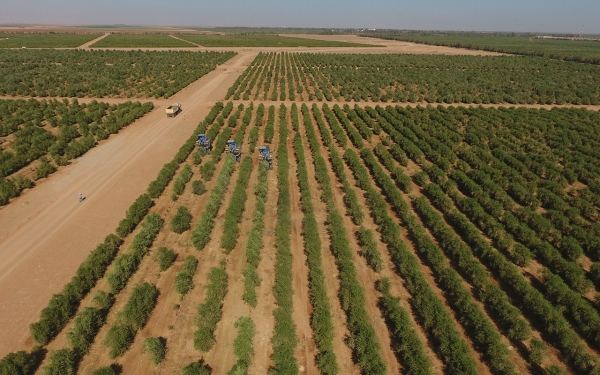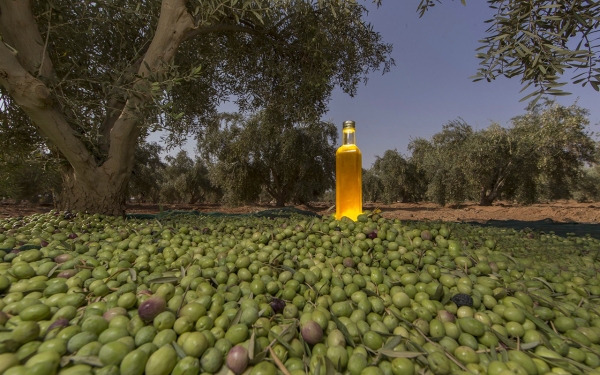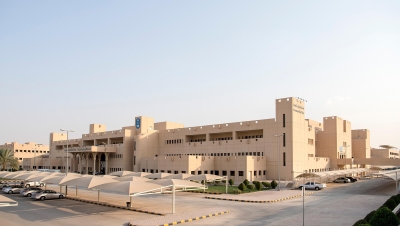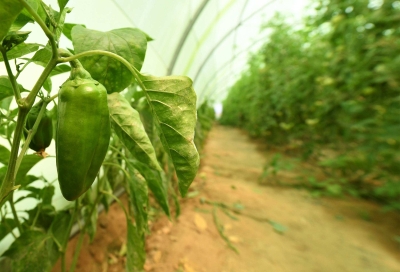


Olive Cultivation in the Kingdom of Saudi Arabia, the beginnings of olive cultivation in the Kingdom date back to 2002. During this time, the Olive Research Unit, affiliated with the Camel Research Center in Jawf Province in the north of the Kingdom, initiated the establishment of a genetic complex to study the cultivation of thirty olive varieties known to be abundant in olive-producing countries, e.g., Spain, Hellenic Republic, Syria, Jordan, Tunisia, and Morocco. Subsequently, nine of these varieties were approved for cultivation in the Kingdom.
In 2006, the intensive cultivation method for olive trees was introduced, which relies on increasing the number of trees to be close to each other. It began in Jawf Province in 2007 and expanded after its success as part of investment projects by major agricultural companies in the Kingdom. By 2023, the number of olive trees in Jawf Province alone reached approximately twenty-five million trees, producing eighteen thousand tons of olive oil annually.
Olive cultivation thrives in regions situated between (thirty-forty-five) degrees latitudes, and requires a moderate climate with rainy winters and hot summers. Due to the Mediterranean climate influence in northern Saudi Arabia, olive cultivation has predominantly succeeded in the provinces of Jawf, Hail, and Tabuk and some southern regions like al-Bahah and Aseer due to climate and soil suitability. The Guinness World Records registered the world's largest modern olive farm in Jawf Province in 2018.
Until 2018, the olive tree in the Kingdom covered about fifty-two thousand acres. About 20 percent of the olive production in the Kingdom is allocated for table olives, while the remaining 80 percent is used for olive oil production.
Intensive Olive Cultivation in the Kingdom
In 2007, the Kingdom adopted intensive olive cultivation in Jawf Province. This method involves increasing the number of olive trees per hectare, with a maximum spacing of four m between trees. Approximately 1,600 olive trees are planted per hectare using intensive cultivation, compared to about two hundred trees per hectare in traditional cultivation methods. The region has around one million olive trees distributed across ten fields, with each field containing one hundred thousand trees.
Olive trees require small amounts of water when cultivated intensively, approximately thirty liters at peak demand, whereas they need around eighty liters when cultivated traditionally. Intensive olive cultivation is characterized by efficient land use and mechanical harvesting. The productivity in intensive cultivation per hectare reaches approximately twelve t starting in the fourth year of the olive tree's life, while the productivity in traditional cultivation decreases to about eight t per hectare and is delayed until the ninth year of the olive tree's life.
Olive Varieties in the Kingdom
Olive cultivation encompasses approximately thirty varieties, each with its unique characteristics and uses. Among these varieties is the "Picual", which is cultivated in the provinces of Jawf, Tabuk, and Hail, with an oil percentage ranging from 15-22 percent. This variety tolerates salinity, high soil moisture, and frost. However, it is susceptible to certain pests and Verticillium wilt disease, a fungal disease that affects olive trees. The Picual variety is used for oil production and pickling in green and black forms, and it originates from Spain.
The Surani olive variety is found in the provinces of Jawf, Tabuk, and Hail in the Kingdom. Its fruits are medium-sized, and it can be used for oil extraction and pickling. The oil content in this variety ranges from 20-27 percent. It adapts well to different climates and tolerates various climatic factors such as frost and drought. However, it is sensitive to the Verticillium wilt disease.
The Picholine olive variety is primarily found in Jawf Province. It has a moderate oil content and is used for green and black pickling. This variety serves a dual purpose and is relatively less sensitive to frost and drought. It can also tolerate the Peacock Spot disease that affects olive trees and originates from France.
The cultivation of the Zaity olive in Sakaka Governorate in Jawf Province produces an abundant amount of oil up to 30 percent, and its fruit size ranges from small to medium. It is sensitive to Fartuslumi disease and injury to the leg borer. It tolerates a peacock eye disease.
The Jalt variety is grown in al-Qurayyat, al-Baha, and Tabuk featuring large-sized fruits. It is used for both green and black table olives. This variety is known for its early production, high and consistent yield, and ability to withstand various climate factors such as drought and frost.
Kaissy olive is a dual-purposed variety, allowing farmers to choose between producing oil, or using it as table olives depending on market demand. Its medium-sized fruits are easy to separate from the pulp. It is used for green pickling and is one of the varieties that can tolerate drought and frost while being less sensitive to plant pests.
The cultivation of the Manzanilla variety is widespread in Jawf Province of the Kingdom, and its fruits are medium-sized, used for pickling, and originate from Spain. On the other hand, the Dan variety is used for both oil production and table olives. Its size is medium, and it is considered a high-yielding variety. The Nabali variety has an oval shape, and contains a high oil percentage, reaching up to 26 percent of the fruit's weight. This variety ripens slowly and is preferred for use as green table olives. It is found in the provinces of Jawf and Tabuk and is known for its resistance to drought, diseases, and insects.
Saudi Olives in Guinness World Records
The Guinness World Records registered one of the fields owned by al-Jawf Agriculture Development Company in 2018 as the world's largest olive farm. Additionally, the olive oil factory owned by the company is one of the largest olive oil production facilities in the Middle East.
Some olive varieties are dedicated to oil extraction due to their regular production and higher oil content. Others are dedicated to table olives, featuring medium to large-sized fruits with thick pulp that is easy to process. For table olives, varieties in which the percentage of oil ranges from 12-15 percent are preferred because the oil increases the shelf life and gives the fruit a good taste. As for the dual-purpose varieties, they combine the characteristics of all varieties.
In 2023, al-Jawf Agricultural Development Company received the gold medal as the best organic olive oil in the international competition Japan Olive Oil Prize (JOOP) held in Tokyo, Japan, to enhance the quality of premium virgin olive oils.
Olive Festival in the Kingdom
The Olive Festival in the Kingdom is held annually in Jawf Province and lasts for ten days. It celebrates the abundant olive production in the region and promotes various olive products. The festival aims to promote the cultivation of olive trees and harness the economic and health benefits they offer. It also features events and specialized seminars related to olive cultivation.
The olive tree is one of the blessed trees mentioned in the Nob Quran, and its original habitat is the Eastern Mediterranean region, especially Turkey, Syria, and Palestine. It has a relatively high tolerance for challenging environmental conditions.
Related quizzes

